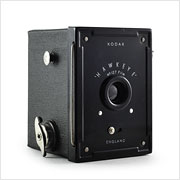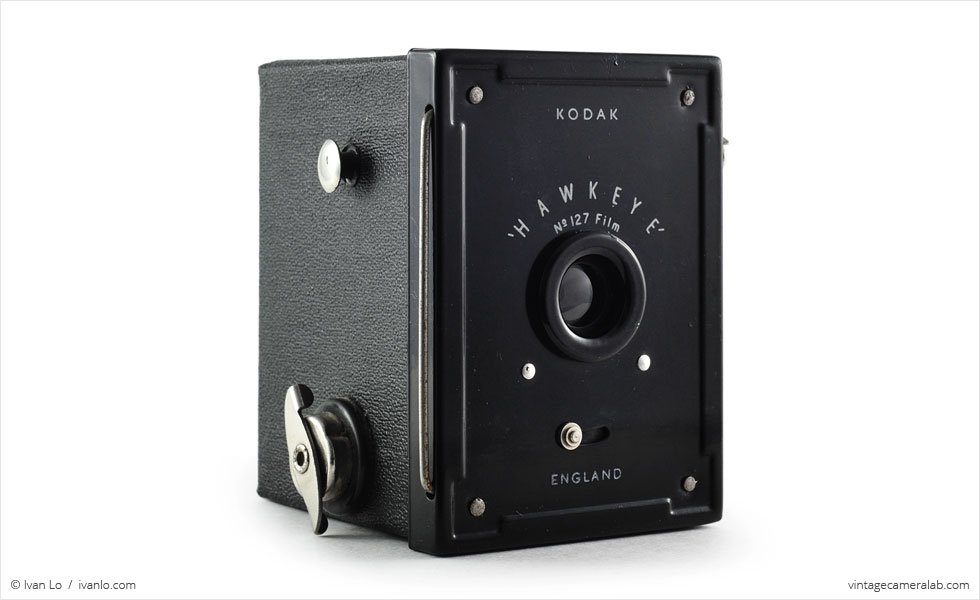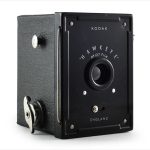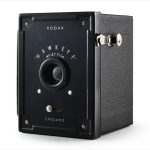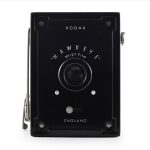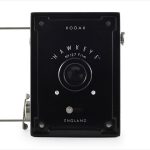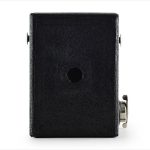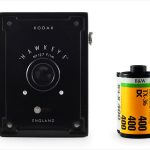Kodak Hawkeye Specifications
| Manufacturer: | Kodak Ltd., London |
| Origin: | USA |
| United Kingdom | |
| Made in: | London, United Kingdom |
| Introduced: | 1936 |
| Type: | Box, Viewfinder |
| Format: | 127 Film |
| Dimensions: | 6.3 x 8.7 x 7.1 cm |
Kodak Hawkeye Overview
The Kodak Hawkeye (also commonly sold as the “Baby Hawkeye,” “Hawkeye Ace,” and “Hawkeye Ace De Luxe” in several slight variations) is a simple box camera made of leatherette-covered cardboard with a metal face. The Hawkeye was manufactured by Kodak Ltd., London—the British subsidiary of Eastman Kodak—and appears to have only been available in select European markets when it was introduced in 1936.
Like the vast majority of box cameras, the Hawkeye is very basic. The single speed shutter (which is approximately 1/60) is tripped by sliding the tiny silver button located between the simple meniscus lens and the word “ENGLAND.” The shutter doesn’t need to be cocked so it does not matter in which direction the button is slid. For composition, a wire frame finder can be extended from the user’s right-hand side of the camera, right in front of the film advance knob. Just above that knob is a strap lug with a matching one on the other side which is adjacent to the latch that holds the camera together.
As far as I can tell, the Kodak Hawkeye was never conventionally sold in the United Kingdom. Rather, they were offered through various newspapers and magazines as something their readers could send in for. I bought this near mint condition example on eBay from the original owner who had obtained it through John Bull magazine as a young boy in Norwich, England. Although the strap and instructions are missing, the camera came to me with the original cardboard box it was shipped in which features an official John Bull shipping label, several examples of antiquated handwriting, and an advertisement sticker for Kodak 127 rollfilms.
Find your very own Kodak Hawkeye on eBay.
McKeown, James M. and Joan C. McKeown’s Price Guide to Antique and Classic Cameras, 2001-2002. (Grantsburg, WI, USA: Centennial Photo Service, 2001), p 344.
“Baby Hawkeye (Kodak),” Camera Wiki, http://camera-wiki.org/wiki/Baby_Hawkeye_(Kodak)
